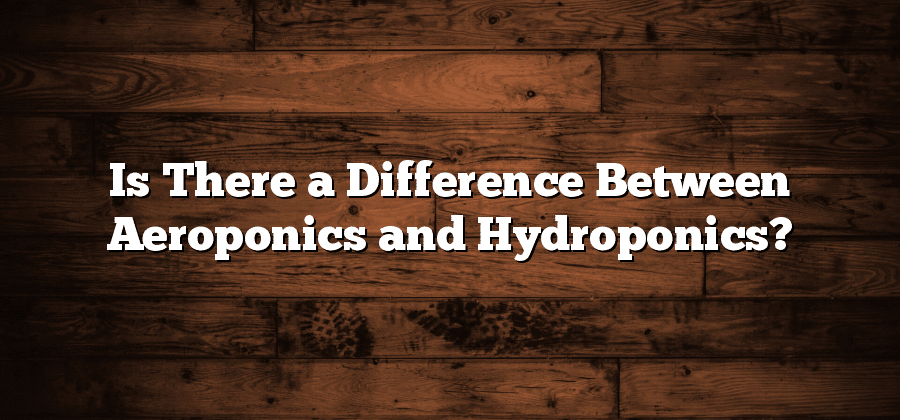What is Aeroponics and Hydroponics?
Aeroponics and hydroponics are innovative methods of cultivation that have gained popularity in recent years. These systems focus on growing plants without the use of soil, allowing for more controlled and efficient plant growth.
In aeroponics, plants are grown in a mist or fog environment, where their roots are exposed to a nutrient-rich solution. This method provides plants with oxygen and nutrients directly, promoting faster growth and healthier yields. On the other hand, hydroponics involves growing plants in water-based solutions, with nutrients being delivered directly to the roots. This method also eliminates the need for soil, allowing for optimal nutrient uptake by the plants. Both aeroponics and hydroponics offer unique advantages over traditional soil-based methods, leading to increased plant growth and productivity.
Exploring the Fundamental Concepts
The fundamental concepts of aeroponics and hydroponics lay the groundwork for understanding these innovative cultivation methods. Both approaches share a common goal: growing plants in a soilless environment. However, they differ in how they provide essential nutrients to plants. While aeroponics utilizes a misting system to deliver nutrients directly to the roots, hydroponics submerges plant roots in a nutrient-rich water solution.
One key aspect to explore is the absence of soil in both aeroponics and hydroponics. By eliminating soil, growers can precisely control the growing conditions and optimize resource allocation. This soilless environment offers numerous advantages, such as reduced water usage, fewer pest and disease issues, and faster growth rates. Understanding these fundamental concepts sets the stage for a closer examination of the intricate mechanisms and techniques that fuel the success of aeroponics and hydroponics.
The Role of Water in Aeroponics and Hydroponics
Water plays a central role in both aeroponics and hydroponics, serving as the primary medium for plant growth and nutrient delivery. In aeroponics, plants are suspended in air and receive a fine mist of water enriched with nutrients. This mist provides the necessary hydration for plant roots and facilitates nutrient absorption. The absence of a solid growing medium in aeroponics allows for maximum oxygenation and root exposure to nutrients, promoting rapid growth and enhanced nutrient uptake. In hydroponics, water acts as the primary carrier of nutrients, with plants rooted in an inert medium such as rockwool or perlite. The constant circulation and recirculation of water in hydroponics systems ensure that plants receive a steady supply of nutrients, allowing for precise control over their uptake. This water-centric approach in aeroponics and hydroponics creates an optimized environment for plants to thrive, enabling efficient nutrient delivery and facilitating healthy growth.
Nutrient Delivery Systems in Aeroponics and Hydroponics
Nutrient delivery systems play a crucial role in both aeroponics and hydroponics, ensuring that plants receive the necessary nutrients for optimal growth and development. In aeroponics, nutrient delivery is primarily achieved through misting or fogging systems. These systems use pumps to create a fine mist or fog of nutrient solution, which is then sprayed directly onto the plant roots suspended in air. By delivering nutrients in this manner, aeroponics allows for a more efficient uptake of nutrients, as the fine particles can easily coat and penetrate the root structures.
On the other hand, hydroponics relies on various delivery systems to provide nutrients to the plant roots submerged in a nutrient-rich water solution. One commonly used method is the recirculating system, where a pump continuously circulates the nutrient solution through the root zone, ensuring a constant supply of nutrients. Another method is the drip system, where nutrient solution is dripped onto the roots at regular intervals. This method allows for precise control of nutrient delivery, preventing over-watering and ensuring each plant receives the necessary nutrients. Overall, both aeroponics and hydroponics have their own unique nutrient delivery systems, each designed to maximize nutrient absorption and promote optimal plant growth.
Comparing Root Structures and Growth Methods
In both aeroponics and hydroponics, the root structures and growth methods differ significantly from traditional soil-based cultivation. In aeroponics, the roots of plants are suspended in air and misted with a nutrient-rich solution. The absence of soil allows for increased oxygenation and efficient nutrient uptake by the roots. This method promotes faster growth, higher yields, and healthier plants.
On the other hand, hydroponics involves growing plants in a nutrient solution that provides all the necessary elements for growth. Instead of soil, plants are supported through various mediums such as perlite, rockwool, or coconut fiber. The roots are submerged in the nutrient solution or continuously fed with it, ensuring constant access to water and nutrients. This method allows for precise control over the plant’s environment, resulting in optimal growth and reduced water usage.
Comparing the root structures and growth methods, it is evident that both aeroponics and hydroponics offer unique advantages over traditional soil-based cultivation. By eliminating soil and focusing on direct nutrient delivery, these methods provide a more efficient and controlled environment for plant growth. This enables growers to achieve higher yields, faster growth rates, and healthier plants, making aeroponics and hydroponics popular choices in modern agricultural practices.






